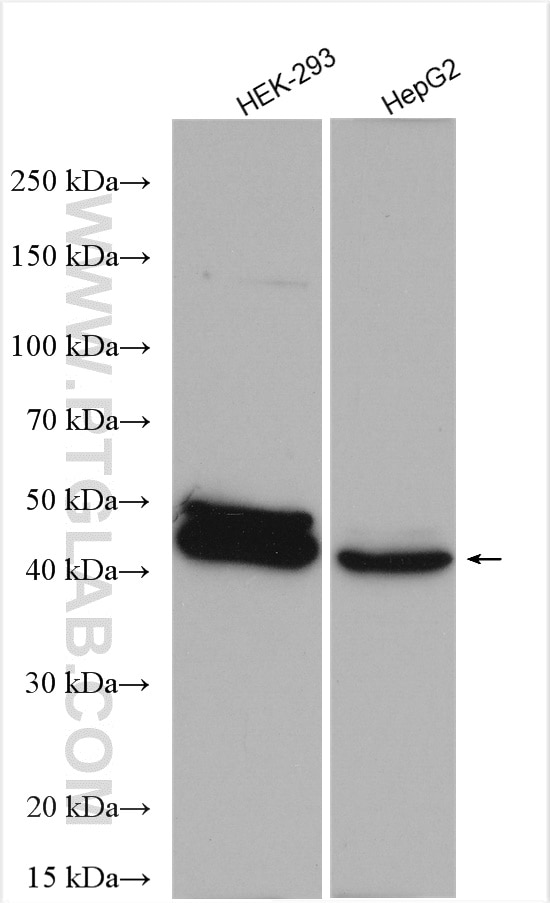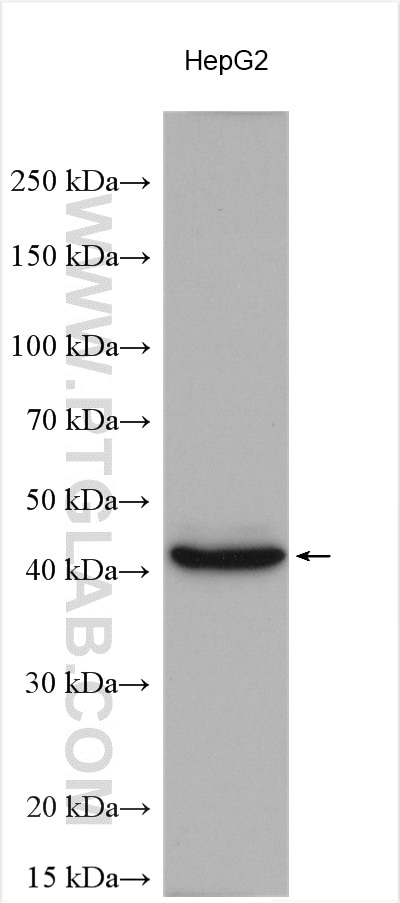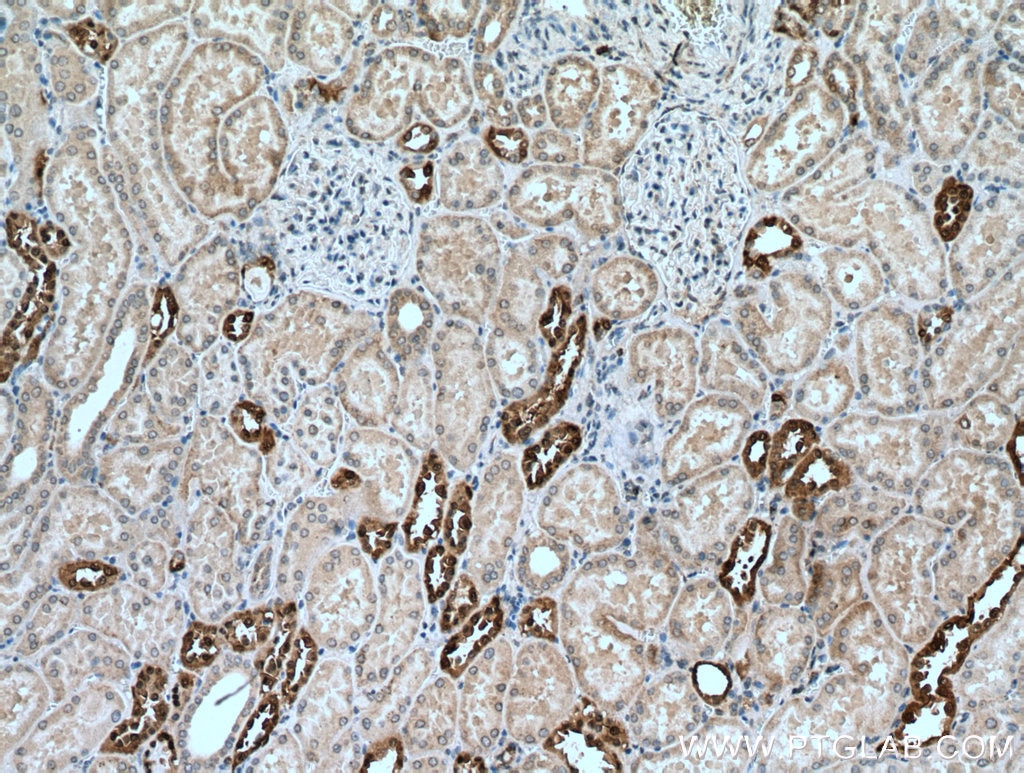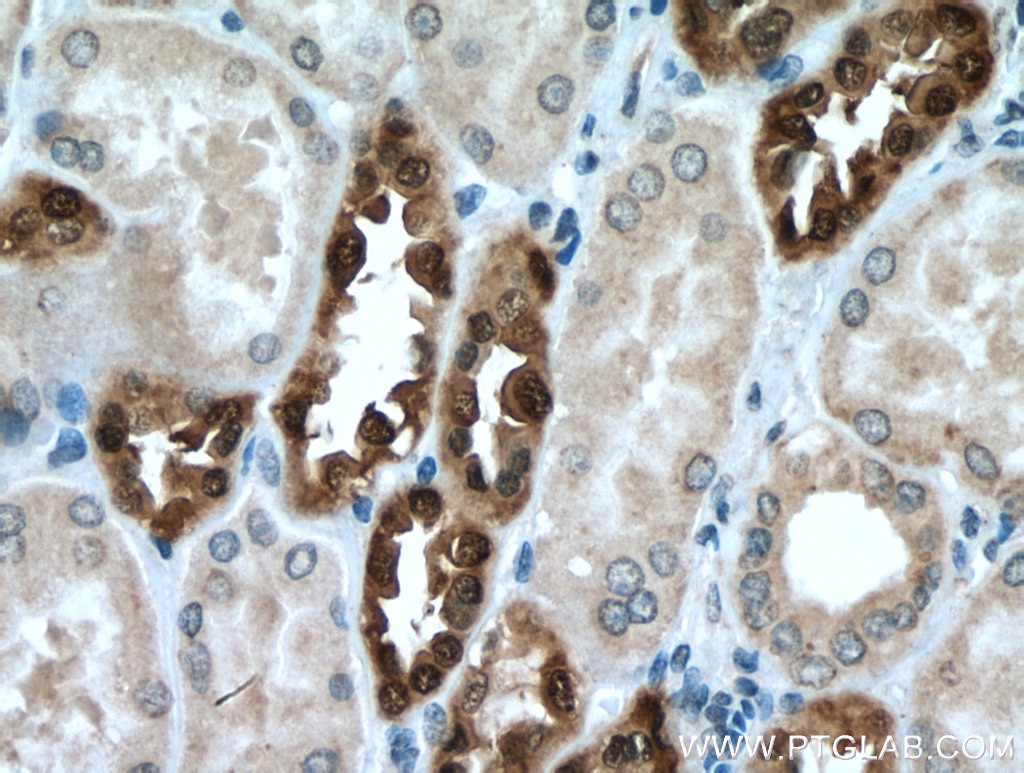Anticorps Polyclonal de lapin anti-DUSP9
DUSP9 Polyclonal Antibody for WB, IHC, ELISA
Hôte / Isotype
Lapin / IgG
Réactivité testée
Humain
Applications
WB, IHC, ELISA
Conjugaison
Non conjugué
N° de cat : 26718-1-PBS
Synonymes
Galerie de données de validation
Informations sur le produit
26718-1-PBS cible DUSP9 dans les applications de WB, IHC, ELISA et montre une réactivité avec des échantillons Humain
| Réactivité | Humain |
| Hôte / Isotype | Lapin / IgG |
| Clonalité | Polyclonal |
| Type | Anticorps |
| Immunogène | DUSP9 Protéine recombinante Ag25167 |
| Nom complet | dual specificity phosphatase 9 |
| Masse moléculaire calculée | 42 kDa |
| Poids moléculaire observé | 42 kDa |
| Numéro d’acquisition GenBank | BC060837 |
| Symbole du gène | DUSP9 |
| Identification du gène (NCBI) | 1852 |
| Conjugaison | Non conjugué |
| Forme | Liquide |
| Méthode de purification | Purification par affinité contre l'antigène |
| Tampon de stockage | PBS only |
| Conditions de stockage | Store at -80°C. 20ul contiennent 0,1% de BSA. |
Informations générales
Dual specificity protein phosphatase 9 (DUSP9) is also named itogen-activated protein kinase phosphatase 4 (MAP kinase phosphatase 4; MKP-4). DUSP9 is a typical DUSP characterized by the presence of an MKB/KIM motif and a phosphatase domain, which shares structural homology with other DUSPs (PMID: 25519881). DUSP9 is an important downstream regulator of BMP/Smad signaling and a key factor in maintaining the stemness of mESCs (PMID: 34768967). DUSP9 is one of the key genes involved in gonadotrophin-mediated ovarian follicle development (PMID: 33676987). DUSP9 expression increases during insulin-induced adipogenesis and culminates in mature adipocytes. DUSP9 as a key regulator of insulin signaling and highlighted its potential role in insulin resistance and metabolic diseases by dephosphorylating kinases involved in metabolic processes, glucose uptake and storage. DUSP9 can also impair the action of extracellular mediators and stress inducers (i.e., proinflammatory cytokines), which can induce insulin resistance by abnormally activating MAPK or SAP pathways (PMID: 30063256, PMID: 18296638). In normal mature tissues, DUSP9 is mainly expressed in kidney, adipose tissue and placenta, while it is only minimally present in brain, ovary, testis and urinary bladder (PMID: 34768967).









